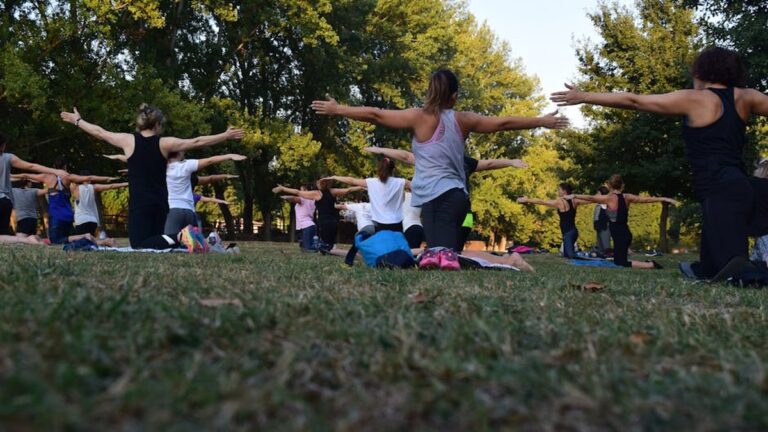SAD Therapy: Light & Mood Boost
Understanding Seasonal Affective Disorder (SAD) in 2025
As winter approaches in 2025, many individuals will face the familiar challenge of Seasonal Affective Disorder (SAD). SAD is a type of depression that’s related to changes in seasons, beginning and ending at about the same times every year. The reduced sunlight during fall and winter can disrupt your body’s internal clock, leading to feelings of sadness, fatigue, and hopelessness. Understanding the science behind SAD is the first step in effectively managing it. Approximately 10 million Americans are affected by SAD, and millions more experience a milder form of the ‘winter blues’.
What Causes SAD?
The exact cause of SAD isn’t fully understood, but several factors are believed to play a role: Boost Immunity This Fall!…
- Disrupted Circadian Rhythm: Reduced sunlight can disrupt your body’s internal clock (circadian rhythm), which regulates your sleep-wake cycle and hormone production. How does light therapy impact my circadian rhythm? Light therapy helps to reset this rhythm by mimicking natural sunlight.
- Serotonin Levels: A drop in serotonin, a neurotransmitter that affects mood, is linked to SAD. Reduced sunlight can lead to lower serotonin levels.
- Melatonin Levels: Changes in the balance of melatonin, which helps regulate sleep, can also affect mood and sleep patterns.
Light Therapy: A Cornerstone of SAD Therapy
Light therapy for SAD remains a primary treatment option in 2025. It involves sitting near a light box that emits a bright light mimicking natural outdoor light. The light exposure helps regulate your circadian rhythm and can improve mood. What is the most effective light therapy for SAD? Usually, a light box that emits 10,000 lux of light is recommended.
How Light Therapy Works
Light therapy works by stimulating the retina, which sends signals to the brain that regulate mood, sleep, and other functions. Consistent daily use is crucial for its effectiveness. It’s typically recommended to use a light box for 20-30 minutes each morning, ideally shortly after waking up.
Choosing the Right Light Box
When selecting a light box, consider the following:
- Lux: Aim for a light box that emits 10,000 lux.
- UV Filter: Ensure the light box filters out harmful ultraviolet (UV) rays.
- Safety: Look for a light box that’s been tested and certified by a reputable organization.
Case Study: Light Therapy Success
Sarah, a 35-year-old accountant, experienced severe SAD symptoms each winter. After consulting her doctor, she started using a 10,000 lux light box for 30 minutes every morning. Within two weeks, she noticed a significant improvement in her mood and energy levels. She continued using light therapy throughout the winter and found it to be a highly effective seasonal depression treatment 2025.
Mood-Boosting Strategies for Winter
In addition to light therapy, several other strategies can help combat SAD and improve your mood during the winter months. These mood boosting winter strategies focus on lifestyle changes and holistic well-being.
Lifestyle Adjustments
What lifestyle changes can help prevent SAD?
- Regular Exercise: Physical activity releases endorphins, which have mood-boosting effects. Aim for at least 30 minutes of moderate-intensity exercise most days of the week.
- Healthy Diet: Eat a balanced diet rich in fruits, vegetables, and whole grains. Avoid processed foods, sugary drinks, and excessive caffeine.
- Sufficient Sleep: Prioritize sleep and aim for 7-9 hours of quality sleep each night.
- Social Connection: Stay connected with friends and family. Social interaction can help combat feelings of isolation and loneliness.
Nutritional Support
Certain nutrients may play a role in mood regulation. Consider incorporating these into your diet:
- Vitamin D: Vitamin D deficiency is common during winter. Consider taking a vitamin D supplement.
- Omega-3 Fatty Acids: Found in fatty fish, flaxseeds, and walnuts, omega-3s are important for brain health.
- B Vitamins: B vitamins, especially B12 and folate, are essential for nerve function and mood regulation.
Mindfulness and Meditation
Practicing mindfulness and meditation can help reduce stress and improve mood. Even a few minutes of daily meditation can make a difference. Techniques such as deep breathing exercises and guided imagery can be particularly helpful.
Example: The Power of Gratitude
Start a gratitude journal and write down three things you’re grateful for each day. This simple practice can shift your focus from negative thoughts to positive ones, boosting your overall mood. How can I naturally boost my mood during winter? Focusing on gratitude is a great place to start.
Emerging SAD Treatments in 2025
Are there new SAD treatments coming in 2025? While light therapy and lifestyle changes remain the primary treatments, research continues to explore new and innovative approaches to managing SAD. Some promising areas of research include:
Digital Therapeutics
Digital therapeutics, such as smartphone apps and online programs, are becoming increasingly popular for managing mental health conditions, including SAD. These tools can provide personalized support, track symptoms, and deliver evidence-based interventions.
Transcranial Magnetic Stimulation (TMS)
TMS is a non-invasive brain stimulation technique that uses magnetic pulses to stimulate nerve cells in the brain. Some studies have shown that TMS can be effective in treating depression, including SAD. While not a first-line treatment, TMS may be an option for individuals who haven’t responded to other therapies. Pumpkin Detox: Post-Halloween Cleanse…
Pharmacological Options
Antidepressants, such as selective serotonin reuptake inhibitors (SSRIs), may be prescribed to treat SAD. However, it’s important to discuss the potential risks and benefits with your doctor before starting medication.
SAD Prevention Methods
Taking proactive steps can help prevent SAD or reduce its severity. Implementing SAD prevention methods before the onset of winter can be particularly beneficial.
Planning Ahead
- Start Light Therapy Early: Begin using light therapy in the early fall, before SAD symptoms typically appear.
- Maintain a Consistent Routine: Stick to a regular sleep-wake schedule, even on weekends.
- Prioritize Self-Care: Engage in activities that you enjoy and that help you relax and de-stress.
Creating a Bright Environment
Maximize your exposure to natural light by opening curtains, sitting near windows, and spending time outdoors during daylight hours. Use bright indoor lighting to create a cheerful and inviting atmosphere.
Combating Winter Blues: A Holistic Approach
Combating winter blues requires a holistic approach that addresses the physical, emotional, and social aspects of well-being. By combining light therapy, lifestyle adjustments, and other mood-boosting strategies, you can effectively manage SAD and improve your quality of life during the winter months.
Frequently Asked Questions
Q1: What is the most effective light therapy for SAD?
This important question is covered in detail in the sections above. Review the related content for comprehensive answers.
Q2: How can I naturally boost my mood during winter?
This important question is covered in detail in the sections above. Review the related content for comprehensive answers.
Q3: Are there new SAD treatments coming in 2025?
This important question is covered in detail in the sections above. Review the related content for comprehensive answers.
Q4: What lifestyle changes can help prevent SAD?
This important question is covered in detail in the sections above. Review the related content for comprehensive answers.
Q5: How does light therapy impact my circadian rhythm?
This important question is covered in detail in the sections above. Review the related content for comprehensive answers.
References & Further Reading
For more information about Seasonal Affective Disorder (SAD) in 2025: Light Therapy and Mood-Boosting Strategies, consider these authoritative sources:
-
NIMH Mental Health Topics
National Institute of Mental Health research and resources.
Source: nih.gov -
APA Mental Health Resources
American Psychological Association mental health guidance.
Source: apa.org -
WHO Mental Health
Global mental health initiatives and research.
Source: who.int
These external resources provide additional scientific and medical insights.
Conclusion
SAD can be a challenging condition, but with the right strategies, it’s manageable. By understanding the causes of SAD and utilizing effective treatments like light therapy and mood-boosting techniques, you can take control of your well-being and enjoy a brighter winter in 2025. Remember to consult with your healthcare provider for personalized advice and treatment options. Don’t let the winter blues get you down – take proactive steps to prioritize your mental and physical health.






